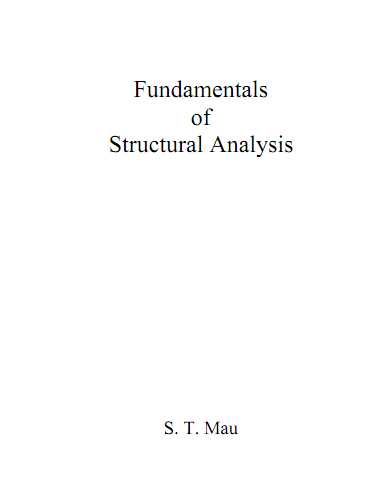Fundamentals of Structural Analysis

Preface
There are two new developments in the last twenty years in the civil engineering
curricula that have a direct bearing on the design of the content of a course in structural
analysis: the reduction of credit hours to three required hours in structural analysis in
most civil engineering curricula and the increasing gap between what is taught in
textbooks and classrooms and what is being practiced in engineering firms. The former is
brought about by the recognition of civil engineering educators that structural analysis as
a required course for all civil engineering majors need not cover in great detail all the
analytical methods. The latter is certainly the result of the ubiquitous applications of
personal digital computer.
This structural analysis text is designed to bridge the gap between engineering practice
and education. Acknowledging the fact that virtually all computer structural analysis
programs are based on the matrix displacement method of analysis, the text begins with
the matrix displacement method. A matrix operations tutorial is included as a review and
a self-learning tool. To minimize the conceptual difficulty a student may have in the
displacement method, it is introduced with plane truss analysis, where the concept of
nodal displacements presents itself. Introducing the matrix displacement method early
also makes it easier for students to work on term project assignments that involve the
utilization of computer programs.
The force method of analysis for plane trusses is then introduced to provide the coverage
of force equilibrium, deflection, statical indeterminacy, etc., that are important in the
understanding of the behavior of a structure and the development of a feel for it.
The force method of analysis is then extended to beam and rigid frame analysis, almost in
parallel to the topics covered in truss analysis. The beam and rigid frame analysis is
presented in an integrated way so that all the important concepts are covered concisely
without undue duplicity.
The displacement method then re-appears when the moment distribution and slopedeflection
methods are presented as a prelude to the matrix displacement method for
beam
and rigid frame analysis. The matrix displacement method is presented as a
generalization
of the slope-deflection method.
The above description outlines the introduction of the two fundamental methods of
structural analysis, the displacement method and the force method, and their applications
to the two groups of structures, trusses and beams-and-rigid frames. Other related topics
such as influence lines, non-prismatic members, composite structures, secondary stress
analysis, limits of linear and static structural analysis are presented at the end.
S. T. Mau
2002
Download
*